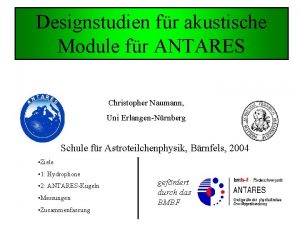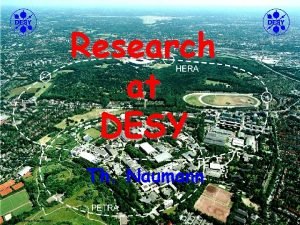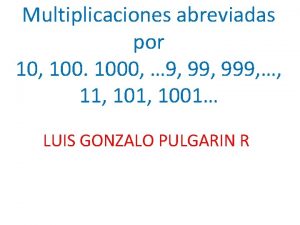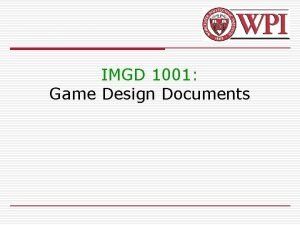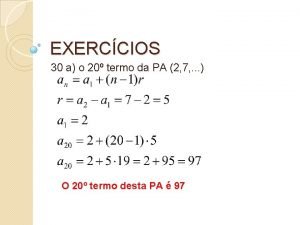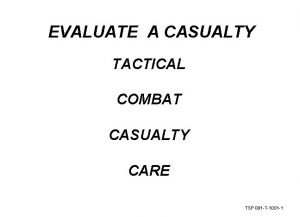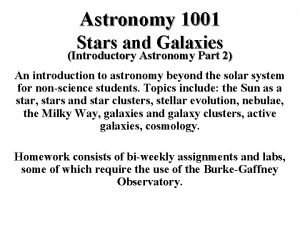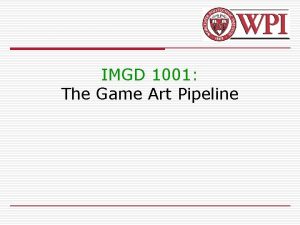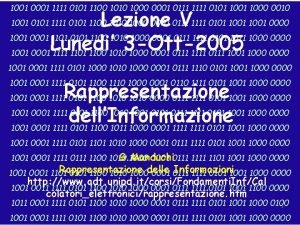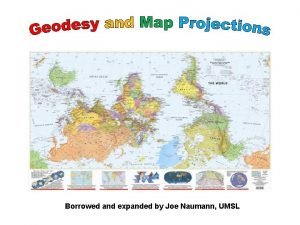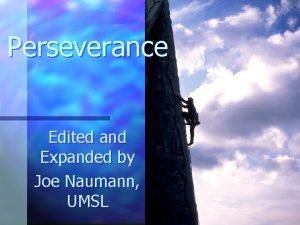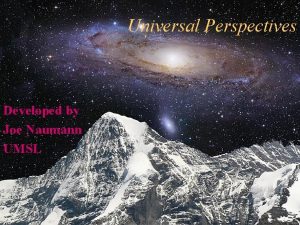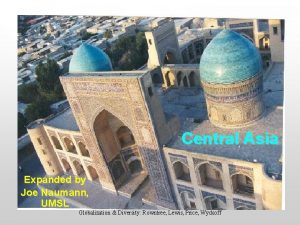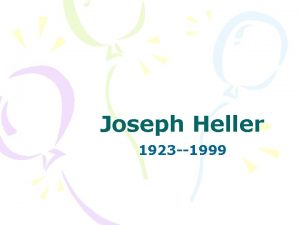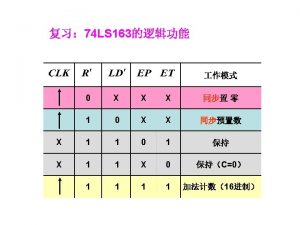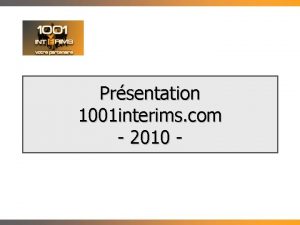GEOGRAPHY 1001 INTRODUCTION TO GEOGRAPHY Joseph Naumann UMSL




















- Slides: 20

GEOGRAPHY 1001 – INTRODUCTION TO GEOGRAPHY Joseph Naumann -- UMSL Evolution of the World Map A – Antiquity B – Middle Ages C – Age of Discovery D – Modern Era

Antiquity • Herodotus (circa 450 BC) – Inspired by Pythagoras (530 BC) and his geometry. – Father of geography. – Basic physical and human geography. – Exploration and travel instead of geometry. – Coined the terms Europe, Asia and Africa (Libya).

Herodotus (450 B. C. ) (recreation)

Antiquity Frigid Ekumene Equator Torrid • Aristotle (circa 350 BC) – Considered physical elements such as the temperature and winds as factors of the human habitat. – Division of the world in 3 climatic zones. – Relationships between the environment (temperature) and human habitat. – One of the first physical geographer.

Antiquity • Eratosthenes (circa 250 BC) – Formally assumed the earth was round. – Calculated the circumference of the earth. – 40, 572 km versus the exact figure of 40, 091 km. – Developed the concepts of parallel and meridian. – Consequently introduced the concept of geographical location. – Created modern cartography (cartographic plane).

Eratosthenes (194 B. C. ) (reconstruction)

Antiquity • Ptolemy (circa 150 AD) – Refined the coordinate system. – Inventory of population and resources. – Describing the world. – 8, 000 entries. – Relationships between the physical and human elements. – Created map projections.

Ptolemy's (150 AD) Ulm edition world map, 1482

Middle Ages • Period of decline – The cartographic and regional approach was lost in Europe. – Representation of the world was “Christianized”. – Orthodoxy replaced objective observation and analysis. – “T and O” Maps. – Greek and Roman knowledge kept by the Byzantine Empire and by the Arabs.

th Macrobian World Map (5 Century)

Redrawing of Cosmas Indicopleustes' World (6 th Century)

World Map of Guido of Pisa, 1119 A. D.

Jerusalem, the Center of the World

Age of Discovery • Exploration and innovation – The 15 th and 16 th centuries were characterized by numerous maritime explorations. – A commercial expansion of European nations. – Several technical innovations. • The compass, more precise maps. • Larger ships (they passed from 200 to 600 tons during the sixteenth century), better ship structures and the rudder. • Insure a safe, fast and therefore profitable maritime navigation. – Creation of the first accurate world maps.

Central America, 1514

Mappa Geographia Universalis (H Sherer 1703)

Modern Era • A complete world map – Early 20 th century. – Complete and accurate view of the world. – Coordinate systems. – National inventories of resources. • Information technologies – Use of remote sensing (aerial photographs and remote sensing). – G. I. S. & Digital maps.

"The Living Earth" Satellite Composite, 1995

Problem of Distortion • All maps, by their very nature contain some type of distortion. – Converting a 3 -dimensional spherical surface to a 2 -dimensional “flat” surface.

Essentials of a good map • Title – view knows what to expect • Grid – allows for easy, accurate locating • Direction arrow or compass rose – to orient the map to reality • Scale – to allow one to relate distances on the map to the actual distances on the earth. • Key or Legend – so the viewer can understand what the symbols and colors represent.
 Teknik pointer
Teknik pointer Umsl cashiers office
Umsl cashiers office Umsl myview
Umsl myview Umsl optometry tuition
Umsl optometry tuition Ingrid naumann
Ingrid naumann Hydrophon selber bauen
Hydrophon selber bauen Blast furnace
Blast furnace Thomas naumann
Thomas naumann Joe naumann
Joe naumann Konversi bilangan desimal 9 menjadi kode excess-3 adalah
Konversi bilangan desimal 9 menjadi kode excess-3 adalah Rtd/atu 1001 pension plan
Rtd/atu 1001 pension plan 999 x 1000
999 x 1000 High concept game design
High concept game design Hill valley ridge saddle depression
Hill valley ridge saddle depression Nfpa 1001 skill sheets
Nfpa 1001 skill sheets Considere todos os numeros inteiros entre 101 e 1001
Considere todos os numeros inteiros entre 101 e 1001 Evaluate a casualty
Evaluate a casualty 1001 stars
1001 stars Game art pipeline
Game art pipeline 1001 pennies answer
1001 pennies answer 1001 1111
1001 1111





